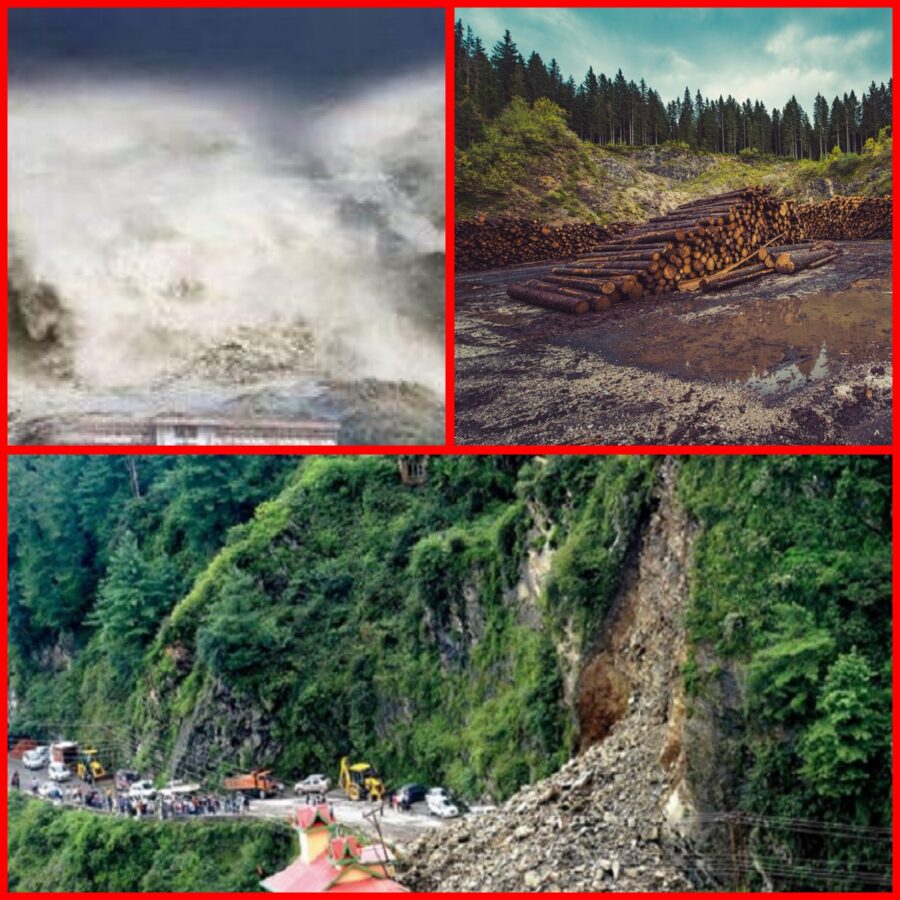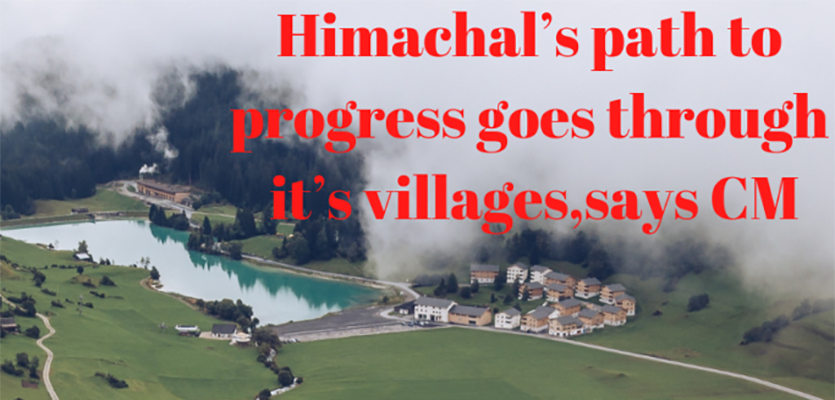agonized” (Ho gayi hai pir parbat si) by Subrat Kumar Sahu attains
significance. Its premiere was one of the star attractions at the
‘Cinema of Resistance’ film festival held in Kangra from December 7 to
9. Around 40 participants from various parts of the country attended
the three day film festival cum workshop held at Sambhaavnaa Institute
for Public Policy and Politics.
The film maker has explored the impacts of hydro power development in
the Satluj valley. The film was shot over a period of seven to eight
with Sahu traveling from village to village in the Satluj valley
capturing visuals and resident testimonies of the already deleterious
impacts of many ongoing hydro power projects on the local farm-based
economies and also on their precious water sources, causing
deforestation, health hazards, landslides, flash floods, leading to
desperate situations for the communities and also threatening to drive them into dispossession and perpetual deprivation.
The locals from Ramour to Hangrang Valley in upper Kinnaur not just
narrated their experience of these dams but also spoke of their
attempts to protect their lives, livelihoods, and cultures. They told
endless tales of devastation as well as environmental violations and
failure of the law and policy to address any of their concerns.
Speaking about why he chose the Satluj valley, Sahu said, “I was
traveling in the valley with my camera for another film back in 2010
and expected pristine landscapes. What I saw instead were mountains of
muck and concrete and I knew that there was a story to be heard and
told.”
Social activists have been pointing out that the Himachal Pradesh
government has already laid out plans to install hundreds of hydro
power projects in the state to generate 27,000 megawatts of
electricity, exploiting the rivers in the state. Till now more than
10,000 megawatts of electricity is being harnessed from the already
commissioned projects. Out of the five major river basins in Himachal
Pradesh, the Sutlej basin has the highest identified capacity of
13,000 MW and has been the most ravaged.
Focusing on the Sutlej basin, the film captures the devastation of
people’s resources and the ecology in progress and the responses of
the people to all this. Keeping the broad canvas of the ‘development
debate’ in focus, the narrative is in the format of an informal
travelogue: traveling through the state and learning the situation
while also discovering the solutions people have to offer. This
them into dispossession and perpetual deprivation.
The locals from Ramour to Hangrang Valley in upper Kinnaur not just
narrated their experience of these dams but also spoke of their
attempts to protect their lives, livelihoods, and cultures. They told
endless tales of devastation as well as environmental violations and
failure of the law and policy to address any of their concerns.
Speaking about why he chose the Satluj valley, Sahu said, “I was
traveling in the valley with my camera for another film back in 2010
and expected pristine landscapes. What I saw instead were mountains of
muck and concrete and I knew that there was a story to be heard and
told.”
Social activists have been pointing out that the Himachal Pradesh
government has already laid out plans to install hundreds of hydro
power projects in the state to generate 27,000 megawatts of
electricity, exploiting the rivers in the state. Till now more than
10,000 megawatts of electricity is being harnessed from the already
commissioned projects. Out of the five major river basins in Himachal
Pradesh, the Sutlej basin has the highest identified capacity of
13,000 MW and has been the most ravaged.
Focusing on the Sutlej basin, the film captures the devastation of
people’s resources and the ecology in progress and the responses of
the people to all this. Keeping the broad canvas of the ‘development
debate’ in focus, the narrative is in the format of an informal
travelogue: traveling through the state and learning the situation
while also discovering the solutions people have to offer. This interface is extensively intercepted by images describing the economic
and cultural life that the mountain folks have been leading for
centuries and how an ensuing colossal disaster is slowly taking in to
its grip their social, cultural, and economic security systems. The
nature, of course, speaks for itself, and pits its own arguments.
Sanjay Joshi who is the national convener of Cinema of Resistance
which is a traveling film festival that has been screening films of
struggle of the common people since 2006 says, “Our objective is to
work as an interactive and non-profiting agency of communication
between people and cinema by representing the real issues of people as
opposed to the contemporary mainstream media and cinemas.”]]>
interface is extensively intercepted by images describing the economic
and cultural life that the mountain folks have been leading for
centuries and how an ensuing colossal disaster is slowly taking in to
its grip their social, cultural, and economic security systems. The
nature, of course, speaks for itself, and pits its own arguments.
Sanjay Joshi who is the national convener of Cinema of Resistance
which is a traveling film festival that has been screening films of
struggle of the common people since 2006 says, “Our objective is to
work as an interactive and non-profiting agency of communication
between people and cinema by representing the real issues of people as
opposed to the contemporary mainstream media and cinemas.”]]>




